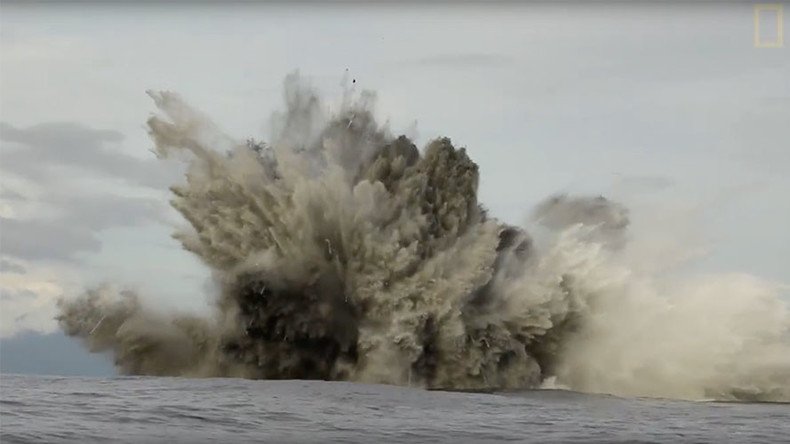Mysterious volcano dwelling sharks studied by robots (VIDEO)

Scientists are using specially constructed underwater robots to study extremely rare sharks that live in one of the harshest environments on planet Earth - inside a submarine volcano.
The incredible sharks were discovered by chance as recently as 2015 in the violent Kavachi volcano in a remote part of the Solomon Islands.
Scientists observing volcanic activity spotted the sharks in the deep sea near the islands in the South Pacific. What first appeared to be an unidentifiable large brown blob was later revealed to be a Pacific sleeper shark. The sighting is the southernmost of the species ever documented.
At first researchers were baffled by what they’d found as they didn’t think anything other than bacteria could live in such extreme conditions.
“To put my scientist hat on there are a number of reasons why there shouldn't be anything living in there except maybe bacteria,” researcher Brennan Phillips told National Geographic. “Number one it's very hot and acidic, and we measured that. Number two, it's very turbid, so the water is very cloudy. None of these things are good for fish.”
The predator can grow up to seven meters long (23 feet). It swims noiselessly with very little body movement allowing them to catch prey with ease.
READ MORE: Sharknado? Man-eater washes up in Cyclone Debbie (VIDEO, PHOTOS)
The team of researchers recently returned to the Solomon Islands equipped with homemade robots to find out more about the sleeper sharks and the volcano. Because the machines were likely destined to be destroyed by the volcano they had to be relatively cheap. The scientists built them out of low cost materials, such as sewer pipe, costing only a few hundred dollars.
“We used some used PVC sewer pipe that was found in the village. You just put some electronics onto that and wham-o, you have an autonomous boat,” Phillips explained.
Researcher Matthew Dunbabin described it as “bush robotics.” The scientists were pleasantly surprised to discover that volcanic material attached itself to the robots during eruptions, making the machines handy for collecting rock samples.
The robots have already provided new insights about the volcano, including that close to the vent there’s a huge drop in the surface pH levels and water temperatures are ten degrees higher than normal. They also discovered that the volcano is a strong greenhouse gas emitter.
The researchers are now planning further trips to the volcano and they hope to be able to put an electronic tag on one of the sharks so they can monitor its behaviour. “The story is not over. For better or worse we gotta go back,” Phillips said.












